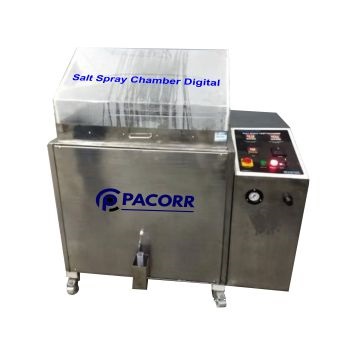
Remove Damages of Metals by Performing Corrosion Test
 Corrosion changes the look of material by breaking it up due to chemical reactions with its environment and refers to the oxidation of metals. One example is rusting, which is the formation of iron oxides. This can damage the metal, reduce the tensile strength, alter its appearance, and increase its permeability.
Corrosion changes the look of material by breaking it up due to chemical reactions with its environment and refers to the oxidation of metals. One example is rusting, which is the formation of iron oxides. This can damage the metal, reduce the tensile strength, alter its appearance, and increase its permeability.
Many ways are used for testing the corrosion resistance. The methods such as the Salt Spray test, and Humidity Test can deliver very accurate results. Depending on industry requirements, these tests can be subject to very stringent standards and guidelines that require various levels of verification.
Salt spray testing is used in many industries because it is inexpensive, faster, well organised, and reasonably repeatable. Although there may be a weak correlation between the duration of the salt spray test and the expected life of a coating in certain coatings such as hot-dip galvanized steel, this test is widely used due to its low cost and quick results. Salt Spray Chambers are used to predict the corrosion resistance of a coating along with maintaining the coating processes such as pre-treatment and painting, electroplating, galvanizing, and so on. For example, pre-treated painted components must pass 96 hours Neutral Salt Spray, to be accepted for production. If any failure occurs to meet this requirement, it shows instability in the chemical process of the pre-treatment, or the paint quality, which must be removed immediately so that the upcoming batches are of the desired quality.
As the accelerated corrosion test takes a longer time, the process remains out of control for a long time causing a larger loss in the form of non-conforming batches. The application of the salt spray test can be used to compare actual and expected corrosion resistance. The salt spray test is an appropriate test to check the quality audit role where it can be used to check the effectiveness of a production process, such as the surface coating of a metallic part. The salt spray test enables prediction on how materials or surface coatings will resist corrosion in real-time, because it does not create, replicate or accelerate real-world corrosive conditions.
Effective Salt Spray tester is used in a controlled environment, such as a closed salt fog tank. Inside the tank, the sample is exposed to a mist of sodium chloride, making the tank’s atmosphere extremely corrosive. By controlling the tank environment, the test can be adapted to replicate many different conditions.

